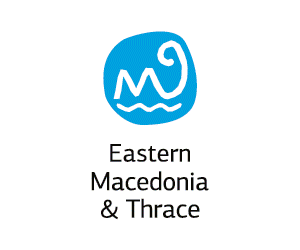Traveler's Guide
East Macedonia & Thrace
Holy Church of the Entrance of Holy Mary

In the Metropolitan throne of Drama in 1902 is positioned tha national martyr Chrysostomos Kalafatis, who with his guidance helps the construction of the imposing buildings of the place, the school, the music and drama club "Reborn Macedonia" and the church of the Entrance of Holy Mary. The Metropolitan Chrysostomos (Kalafatis) was born in 1867 in Triglia in Bithynia, in the Propontis and was the last Metropolitan of Smyrna. Was martyred, as he was massacred by fanatic crowd during the recapture of the city by the Turks in August 1922. The orthodox Church declared him saint and national martyr, and his memory is celebrated on the Sunday before the Exaltation of the Holy Cross. The expense and personal work of the residents in a particularly turbulent period in the history of the area, when the ethnoracial disturbances which were caused by the action of the Bulgarian Exarchate were at their prime, the magnificent church of the Entrance of Holy Mary, is built. The church is the pride of the community and is until today the brightest and most impressive church in the whole region. It was inaugurated on April 27, 1907 on a Sunday, from the Metropolitan Chrysostomos of Drama who gave his soul to build the church, despite the prohibition that the church could not move away from Drama, by Hilmi Pasha. Above the main entrance of the church there is an inscription which informs each incoming: «ΔΑΠΑΝΑΙΣ ΤΩΝ ΕΥΣΕΒΩΝ ΚΑΤΟΙΚΩΝ ΤΣΙΑΤΑΛΤΖΗΣ ΩΚΟΔΟΜΗΘΕΙ Ο ΠΕΡΙΚΑΛΛΗΣ ΟΥΤΟΣ ΝΑΟΣ ΕΙΣΟΔΙΩΝ ΤΗΣ ΘΕΟΤΟΚΟΥ ΕΠΙ ΑΡΧΙΕΡΕΩΣ ΧΡΥΣΟΣΤΟΜΟΥ ΕΝ ΕΤΗ ΣΩΤΗΡΙΩ 1906». The construction of the church was entrusted to the Austrian architect Konrad von Vilas, on the model of Saint Fotini of Smyrna and in the place of the old church, while maintaining the same rare temple. The order is three-aisled basilica with a gabled tile roof. The configuration of main the side is simple with dominant element the composition of the bell tower, which is placed on the central vertical axis of symmetry where is the prominent entrance of the church. The whole construction despite its large size, creates a harmonious total result. Internally, the aisles of the church are defined by seven pairs of pillars with dimensions 0,83 x0, 83m. The pillars are bridged by the transverse meaning with maples that strengthen the arch of the central aisle. There are also maples between the pillars and pilasters which structuring the north and south walls, but only in the part between the floor of the balcony and roof. In the side aisles housing is made with groin vaults. The balcony is Π-shaped and leads eastward to the second pair of pillars, ie before the iconostasis. The roofs are painted in sky blue with gold stars while palmettes and floral motifs that surround the crosses develop in the arches and frames. The iconostasis of the church is derived by the previous church, which was demolished in the early 20th century in order to erect a new. It is rare carved wooden, which is a remarkable example of ecclesiastical wood carving of the 19th century. According to the Code of Community Tsataltza the icon screen was constructed during the years 1842-1844 by Mastro-Veleni. The icons of the iconostasis are organized in horizontal zones. Apart from the main zone of the despotic icons we have two zones of architrave. They are not a unified whole as after the building of the new church and the conversion of the temple, part of Despotic was replaced with newer of images. Some of the small images were recently preserved at the initiative of Church Council of the church by the art restorer Kastriti Angelos. Six of the despotic icons of the church were projects of the Greek painter - Konstantinos Parthenis the hagiographer. Parthenis was born in Alexandria of Egypt in 1878 by a Greek father and Italian mother. He studied painting from 1895 to 1903 at the Academy of Fine Arts in Vienna. Right after this he returned to Greece to deal with the hagiography of images of the church of the Entrance of Holy Mary of Choristi. Images are adapted to the dominant style of the time of religious painting in Greece which was formed mainly in Athens as the official perception of modern Byzantine painting. This is the so-called "improved" Byzantine painting and was proposed to modern Greeks and accepted by the leadership of the Greek Church, the German painter Thiersch (Θείρσιος). All images are almost of the same size 1.10x0.83m., as they were originally intended for the iconostasis of the church. Today, five of them are located to the temple, Jesus Christ the Pantocrator, the Virgin Mary, the Entrance of Virgin Mary, Saint John the Baptist and the Apostles Paul and Silas. The sixth image of Prophet Elias is located in the middle aisle on the left colonnade.
Management Body: Holy Metropolis of Drama
Tel. +302521032362
Address
No information available.Contact Information
+302521032042





